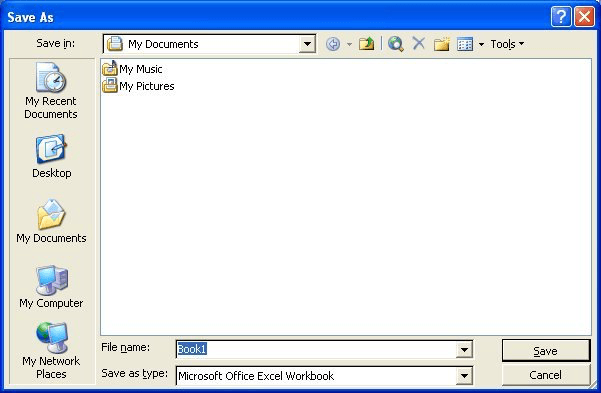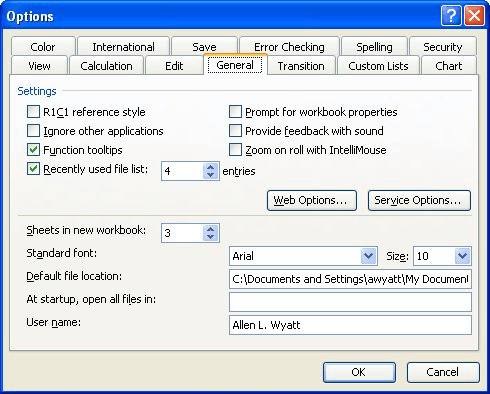Written by Allen Wyatt (last updated June 19, 2021)
This tip applies to Excel 97, 2000, 2002, and 2003

Figure 1. The Save As dialog box.

Figure 2. The General tab of the Options dialog box.
ExcelTips is your source for cost-effective Microsoft Excel training. This tip (2635) applies to Microsoft Excel 97, 2000, 2002, and 2003.

Create Custom Apps with VBA! Discover how to extend the capabilities of Office 365 applications with VBA programming. Written in clear terms and understandable language, the book includes systematic tutorials and contains both intermediate and advanced content for experienced VB developers. Designed to be comprehensive, the book addresses not just one Office application, but the entire Office suite. Check out Mastering VBA for Microsoft Office 365 today!
Adding a predefined footer to your worksheets is easy, and it helps convey valuable information when you make a printout. ...
Discover MoreNormally Excel displays row and column headers in a worksheet. If you prefer, you can turn these navigational aids off ...
Discover MoreWant to print different headers or footers on different parts of your worksheet? Excel has no inherent way to do this, ...
Discover MoreFREE SERVICE: Get tips like this every week in ExcelTips, a free productivity newsletter. Enter your address and click "Subscribe."
2024-05-15 10:20:29
I use excel to prepare reports imported from Sage 50 Accounting. Every week I produce the same reports with the weekly information. Every week I do the same sorting, add the same formulas and then customize the report for visualization. Then I preview the report and customize the the printing options. I Increase the top margin then place the file name on the header. Weekly I have to open the settings and change the font type and font size before printing. Can I set the top margin to the desired height, the font type to the desired one and the font size to the desired one so the it will be there weekly
Got a version of Excel that uses the menu interface (Excel 97, Excel 2000, Excel 2002, or Excel 2003)? This site is for you! If you use a later version of Excel, visit our ExcelTips site focusing on the ribbon interface.
FREE SERVICE: Get tips like this every week in ExcelTips, a free productivity newsletter. Enter your address and click "Subscribe."
Copyright © 2025 Sharon Parq Associates, Inc.
Comments